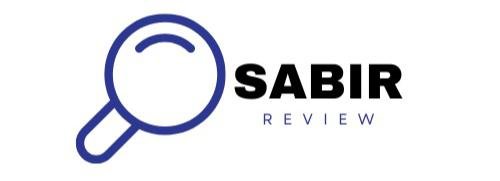
1. The Core of Effective Teaching: Strategies that Work
a) Student-Centered Learning
- What it is: Student-centered learning places the learner at the heart of the teaching process, encouraging active participation and autonomy.
- How to Implement: Use project-based learning, collaborative activities, and allow students to take ownership of their learning by choosing topics of interest.
- Benefits: Increased engagement, improved critical thinking, and better long-term retention.
b) Differentiated Instruction
- What it is: Differentiation involves tailoring teaching to meet the diverse needs, skills, and interests of all students.
- How to Implement: Modify lessons based on students’ learning styles, provide varying levels of challenge, and use formative assessments to gauge progress.
- Benefits: Helps students who are struggling while also providing enrichment opportunities for advanced learners.
c) Active Learning Strategies
- What it is: Active learning encourages students to engage directly with the material through discussions, problem-solving, and hands-on activities.
- How to Implement: Use think-pair-share, group projects, and real-world case studies to create interactive lessons.
- Benefits: Boosts student participation, deepens understanding, and fosters teamwork skills.
2. Mastering Classroom Management Techniques
a) Setting Clear Expectations
- What it is: Establishing clear classroom rules and behavioral expectations helps maintain order and creates a respectful learning environment.
- How to Implement: Define expectations on the first day of class and consistently reinforce them. Use positive reinforcement to encourage good behavior.
- Benefits: Reduces disruptions and ensures students understand the boundaries, fostering a positive classroom culture.
b) Creating a Positive Learning Environment
- What it is: A positive classroom environment supports student well-being and academic success.
- How to Implement: Design your classroom with student comfort and collaboration in mind. Foster a safe and inclusive atmosphere where all students feel valued.
- Benefits: Encourages student engagement and reduces anxiety, improving overall classroom dynamics.
c) Managing Disruptions Effectively
- What it is: Handling disruptions without escalating conflict is a key aspect of effective classroom management.
- How to Implement: Use strategies like redirecting behavior, providing constructive feedback, and offering individual attention when needed.
- Benefits: Maintains focus on the lesson and ensures all students have the opportunity to learn without interruption.
3. Embracing Technology: Tools that Enhance Teaching and Learning
a) Learning Management Systems (LMS)
- What they are: LMS platforms like Google Classroom, Moodle, and Blackboard help organize, deliver, and track lessons and assignments.
- How to Implement: Use LMS to streamline communication, provide easy access to resources, and manage student assessments.
- Benefits: Increases organization, facilitates remote learning, and provides real-time feedback.
b) Interactive Tools and Apps
- What they are: Tools like Kahoot!, Quizlet, and Nearpod provide interactive learning experiences through quizzes, flashcards, and virtual field trips.
- How to Implement: Integrate interactive apps into your lessons to make learning more dynamic and fun, while also helping students retain key concepts.
- Benefits: Increases student engagement, promotes learning through gamification, and enhances understanding.
c) Digital Collaboration Tools
- What they are: Tools like Padlet, Google Docs, and Microsoft Teams enable students to collaborate on projects and share resources digitally.
- How to Implement: Encourage group work and peer feedback by using digital tools that allow for real-time collaboration and information sharing.
- Benefits: Fosters teamwork and communication skills, while making it easier for students to collaborate from anywhere.
4. Maximizing Student Engagement
a) Incorporating Real-World Applications
- What it is: Connecting lessons to real-life situations helps students see the relevance of what they’re learning.
- How to Implement: Use current events, guest speakers, field trips, or case studies to demonstrate how academic content is applied in the real world.
- Benefits: Enhances student interest and understanding, bridging the gap between theory and practice.
b) Using Project-Based Learning (PBL)
- What it is: PBL is a teaching method where students work on long-term projects that require critical thinking and problem-solving.
- How to Implement: Design interdisciplinary projects that require research, collaboration, and a final product or presentation.
- Benefits: Encourages critical thinking, collaboration, and a deeper understanding of concepts.
c) Flipping the Classroom
- What it is: In a flipped classroom, traditional homework and lectures are reversed. Students learn new content at home through videos or reading, and class time is spent on discussion and hands-on activities.
- How to Implement: Provide pre-recorded lessons for students to view at home and use classroom time for interactive activities that reinforce learning.
- Benefits: Maximizes class time for active learning and allows students to learn at their own pace.
5. Continuous Professional Development for Educators
a) Attending Workshops and Conferences
- What it is: Educators can expand their knowledge and network by attending professional development events.
- How to Implement: Attend conferences, workshops, and webinars that focus on current trends in education, teaching techniques, and technology.
- Benefits: Keeps teachers updated on the latest educational practices and provides opportunities to collaborate with peers.
b) Peer Observation and Feedback
- What it is: Observing colleagues and receiving feedback is a powerful way to grow professionally.
- How to Implement: Organize regular peer observations where teachers can watch each other’s classes and provide constructive feedback.
- Benefits: Encourages collaboration, shares best practices, and promotes a culture of continuous improvement.
Conclusion
As the landscape of education continues to evolve, so must the strategies and tools that educators use to engage and inspire students. The journey toward effective teaching involves a combination of proven methods, innovative tools, and a commitment to lifelong learning. By implementing student-centered approaches, refining classroom management techniques, and embracing technology, educators can create a dynamic learning environment that fosters student success.
However, the true impact of a teacher goes beyond simply delivering content—it lies in their ability to adapt to the needs of their students, encourage critical thinking, and create a positive and supportive classroom culture. Teachers who remain open to professional development, who seek out new teaching strategies, and who embrace collaboration with colleagues are the ones who can transform their classrooms into thriving hubs of creativity and knowledge.
Ultimately, the most successful educators are those who are continuously evolving, experimenting with new methods, and finding ways to connect with their students on a deeper level. Education is not just about imparting knowledge, but about inspiring and empowering the next generation to think critically, act responsibly, and navigate the complexities of the world around them.
By applying the strategies and tools discussed in this guide, educators will be well-equipped to meet the challenges of modern classrooms and to create an enriching learning experience for every student. The future of education depends on passionate, innovative, and dedicated teachers—teachers like you who are ready to make a lasting difference.
